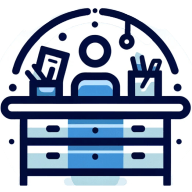3 Measures to Prioritize Digital Security and Protect Sensitive Information
In an era where digital threats loom large, safeguarding sensitive information is non-negotiable. This article distills the wisdom of seasoned experts who share actionable measures for robust digital security. Delve into a deep dive on multi-layered protection, MFA implementation, and encryption best practices that fortify data privacy.
- Multi-Layered Approach Safeguards Sensitive Client Data
- MFA Implementation Strengthens Office Data Privacy
- Encryption and Access Controls Protect Confidential Information
Multi-Layered Approach Safeguards Sensitive Client Data
One of the top priorities at Parachute is keeping sensitive information secure. Cyber threats are constant, and businesses can't afford to be complacent. We've seen how a single data breach can lead to financial losses, reputational damage, and legal trouble. That's why we take a multi-layered approach to digital security, combining encryption, network security, and strict access controls to protect our clients' data. Our team continuously monitors systems for threats and ensures that all security measures stay up to date.
One key measure we take is enforcing strong access control. Not everyone in an organization needs access to every file or system. We use role-based access control (RBAC) to limit data access to only those who need it. Multi-factor authentication (MFA) is a must for all users, reducing the risk of unauthorized logins. A strong access control system is more than just an IT requirement--it's a way to prevent internal mistakes and security gaps that could expose critical information.
Another important step is regular backup and recovery testing. Many businesses set up backups but never test them. That's a mistake. We follow the 3-2-1 backup rule, ensuring there are multiple copies of important data, including off-site storage. More importantly, we run recovery drills to confirm that backups can be restored quickly if needed. When an unexpected event occurs--whether it's a cyberattack or hardware failure--having a tested recovery plan can make the difference between a minor disruption and a major crisis.

MFA Implementation Strengthens Office Data Privacy
To keep digital security and our office's confidential information safe I've put in place a full security protocol which includes system audits, access controls and encrypted storage of data. One of the measures I take to keep data private is to use multi-factor authentication (MFA) for all staff accessing sensitive data or internal systems. For example, we require not only a password but also a verification code sent to their phone to log into our network. This extra layer of security prevents unauthorized access even if a password is compromised. I also make sure all staff go through regular cybersecurity training to stay up to date with the latest threats like phishing and ransomware. This has reduced the risk of breaches significantly and we're keeping client and company data safe.

Encryption and Access Controls Protect Confidential Information
One of the key methods to prioritize digital security is by making sure sensitive information is always encrypted--both when stored and shared. We also use strong access controls and permission-based rules to ensure only authorized team members can access confidential data. Mandatory employee training is another method to make sure everyone understands good security practices and can spot threats.


